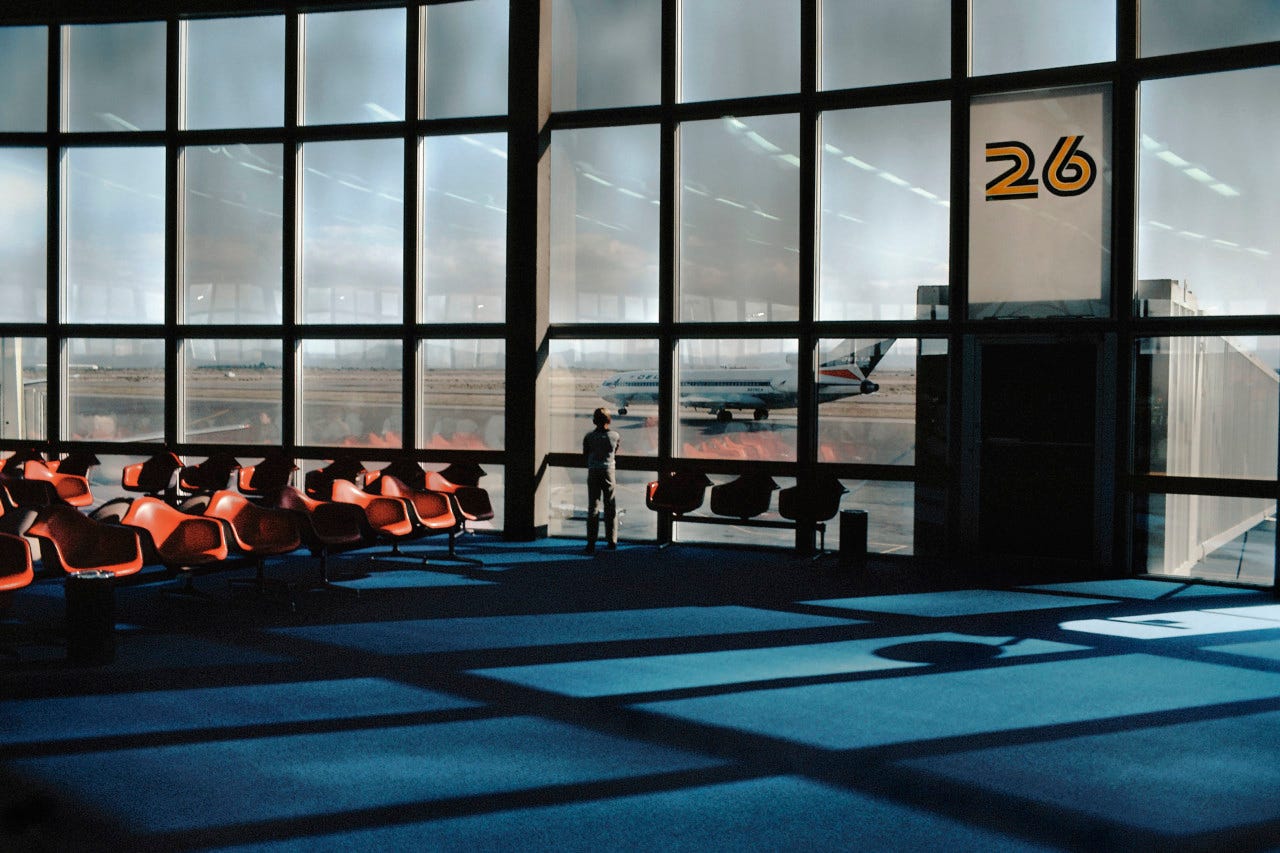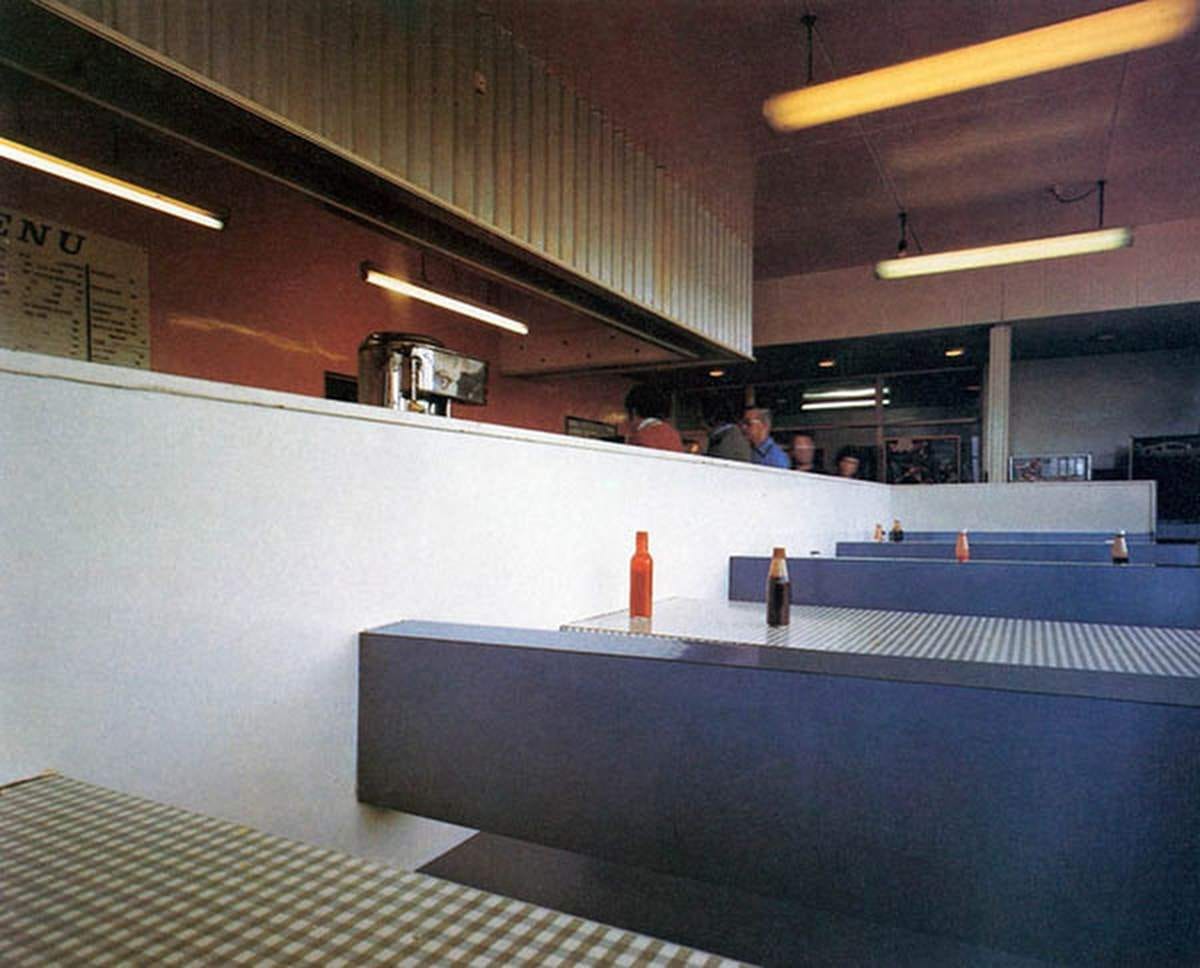Everywhere is Becoming Nowhere
'A man - alone - passes through roads, service stations, parking lots and an airport.' The quietly dystopian world of supermodernity in Marc Augé.
Pierre Dupont has a flight to catch. He takes the A11 out of Paris, stopping off at an ATM on the way. He arrives at the airport in Roissy without any trouble. He parks in an underground carpark. He boards his flight and reads a magazine. He notices an advert for a Renault and skims an article about Africa. He puts on some headphones and listens to a Haydn concerto.
This is how Marc Augé begins Non-Places: An Anthropology of Supermodernity. It’s a strange preface for a serious piece of academic anthropology. It reads like a short story except nothing happens - a man who has to catch a plane does, without any problem or hiccup. What does Augé want us to notice from this? That Dupont is alone perhaps? Only in the final lines of the preface does Augé give us something out of the ordinary:
Somewhat dreamily, Pierre Dupont put down his magazine. The 'Fasten seat belt' notice had gone out. He adjusted his earphones, selected Channel 5 and allowed himself to be invaded by the adagio of Joseph Haydn's Concerto No.1 in E major. For a few hours (the time it would take to fly over the Mediterranean, the Arabian Sea and the Bay of Bengal), he would be alone at last.
Suddenly the reader has questions. ‘Alone at last’? For several pages we have read about Monsieur Dupont’s day and at no time has he not been alone. What does Augé mean with this strange preface? Why is it so tonally different from the much more academic prose of the rest of Non-Places? Why has Dupont not realized he is alone?
The answers to these are found in what non-places are. The likelihood is that you will have been in at least one today. Train stations, airport lounges, motorways, hotel rooms, bus stations, these are all non-places; places where people are anonymous, where they just pass through. Augé makes his definition as a foil to the idea of Marcel Mauss’ description of ‘place’ being spaces where culture in localized in time and space. The most obvious examples of these spaces would be peoples homes. A good way of thinking of non-places is as spaces where if, in a few hundred years after the Climate Wars and the AI Great Depression, archeologists were to find them they would learn next to nothing about the people who existed there.
It’s a feeling some places evoke. That sense that one passes through the place, one never arrives there - it’s a place that’s never a destination. No living takes place there, life exists around it and passes through it but never settles there long enough to leave any real mark. This is why Monsieur Dupont does not realize he is alone all day. We are subconsciously used to editing out non-places from our memories of our days. He has existed only in non-places and therefore has edited out his loneliness. We can only feel alone if we feel as if people belong in the space we inhabit with us.
As a thought experiment think of what you did today. When you recount what you have done and where you have been you wont include places like subway stations or car parks as a part of the list of where you have been in the same way you would your workplace, a friends house or the local pub. And yet you would have spent large amounts of time in the first set of places. It’s scary to think cumulatively how long we have spent on train platforms or airport departure lounges.
So some places matter and some places you just pass through, so what? Why does it matter? In Non-Places Marc Augé isn’t concerned at the existence of non-places. He is aware that it’s natural and normal for some spaces in society to be transient and meaningless. His worry is that more and more places are becoming non-places and that as this happens we spend increasing amounts of time in non-places. His fear is that as this trend progresses we will eventually exist in perpetual, unhappy, states of transience.
It’s a trend we are already seeing. Much has been written, although Augé predicted how problematic it would be in 2009, about the disappearance of third places - places that aren’t one’s work or home, like social clubs or libraries. People don’t have spaces to meet that aren’t their places of work or their homes and there are well documented effects on mental health because of this.
It goes further, what few public spaces there are are becoming less pleasant to exist in. Hostile architecture has meant that public spaces are no longer meant to be welcoming but are designed in ways to control people. Think about how uncomfortable benches have become so people can’t sleep on them or how waiting rooms in railway stations look far less comfortable than they did a few generations ago. Augé predicted all this. In Non-places, he writes about how under capitalism there is no real incentive to make non-places into places and that capitalism creates non-places a bioproduct of its ceaseless need for growth to occur.
It’s noticeable that consumption and capitalism still exit in non-places. In the prologue to Non-places, Augé describes how Dupont is still able to but things in each of the non-places he enters. I once missed a ferry and spent six hours in a ferry terminal, an archetypical non-place. The terminal was in the industrial part of the city, only really accessible by car through a maze of non-descript roads. In the room was a TV wall bracket without the television and a vending machine. Even in this anonymous space it was possible to buy and consume. Augé has countless examples of the phenomenon of capitalism still existing in the most non of non-places. He’s particularly critical of the vending machine for allowing 24/7 consumption to take place completely alone.
Frederic Jameson, the socialist philosopher most famous for Postmodernism: The Cultural Logic of Late Capitalism, argues that capitalism commodifies it’s own critiques. Part of Augé’s horror at the increase of non-places is the way at which capitalism frames them as utopia. In Postmodernism Jameson discusses how in movies set in the future apartments all look the same and people seem to have no possessions that are unique. Keep an eye out for it the next time you watch a movie with these settings hoping to show you a utopia, apartments do feel strangely generic - as if people no longer have unique possessions. This is Augé’s fear. That slowly even homes will been turned into non-places. If we arrive at what was predicted at the 2018 World Economic Forum, that we will “own nothing and be happy” then places that have historically always been places in the Maussian sense become non-places. Augé warns of a future where we all become travelers in our own lives; where, like with Dupont, we are unable to even see that we are alone because we exist in spaces where any real connection is not only impossible but unimaginable.
Augé’s preface, at first reading, feels strange in how mundane it is. A man - alone - passes through roads, service stations, parking lots and an airport. It’s hardly a riveting short story, hardly interesting. But come to the end of Augé’s book, after he has patiently explained the rise of non-places and the social and anthropological consequences of this rise and the a day in the fictional life of Dupont is terrifying. It is a glimpse of a quietly dystopian future, one where we are constantly in transit through our lives, only able to consume and move on, with no place to anchor ourselves, build community or to live in.
Or, as Augé ends Non-places with:
The community of human destinies is experienced in the anonymity of non-place, and in solitude. So there will soon be a need - perhaps there already is a need - for something that may seem a contradiction in terms: an ethnology of solitude.
Augé calls us to notice how many spaces there are where we cannot exist or live in; where we can only pass through, transient, anonymous and on our way somewhere else. His fear is that eventually there will be nowhere else to go - nowhere to have left from and no place to arrive at. We will journey forever through the liminal spaces of highways and strip malls and subway stations, that could be anywhere and in which no one leaves a permanent mark, not wondering where we are because everywhere looks the same, like Dupont, unable to realize we are alone.




